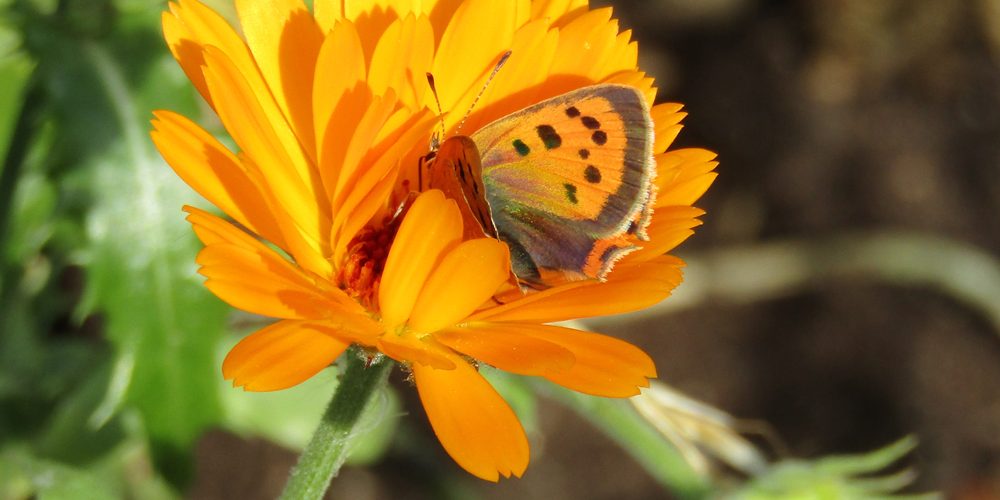We can’t think of a single reason not to grow wildflowers – they look great, they help birds, butterflies and bees, and they do so much for the biodiversity of your plot.
We don’t need to stress the significance of climate change or the impact of soil erosion or insect decline. We’ve all read articles or heard news snippets about these subjects and we know what’s at stake. But what we would like to emphasise is that all these things are interconnected and anyone who has outdoor growing space can do something to help.
Improving the biodiversity in our own gardens and allotments is important, and one of the best ways to do it is to grow is a mixture of native wildflowers. This is because most caterpillars and plant-eating insects feed on only a select few types of plant (that’s why cabbage white caterpillars destroy your brassicas but leave leeks untouched.) Increasing the numbers of these little plant-eaters by growing native wildflowers is key to supporting our wider native wildlife, particularly birds. Woodpeckers, sparrows, blue tits and nearly all our other garden birds feed their young with caterpillars. It’s the easiest way for them to get plant nutrients to their babies. Shrews, spiders and other smaller animals also feed on the caterpillars and insects so by growing more of our native wildflowers, we are kickstarting the local food chain in a stronger way than if we were to fill our gardens with lots of non-native shrubs and flowers.
Of course the wildflowers also provide food for pollinators, particularly bees. This has huge benefits, and will also help to improve your veggie harvests – more bees = more pollination = more tomatoes!
You don’t have to have a huge wildflower meadow to get started. A few native wildflowers dotted in and around the garden, or grown in pots and planters will make a difference. Here are a few ideas to inspire you:
- Wildflower Pot – a 50cm wide pot filled with wildflowers is a good option for a small town garden, or a balcony/patio. The old zinc planters and pots are really good for this, and look very effective too.
- Wildflower Wheelbarrow – If you have an old wheelbarrow, then fill it with soil or compost and turn it into a little wildflower haven.
- Wildflowers in the Borders – There’s nothing stopping you from plugging any gaps in your flower beds with wildflowers, especially if you like the more natural look.
- Dedicated Wildflower Patch – A small 1 to 2 square metre patch can look really effective in the allotment, so if you have a smaller raised bed that you are happy to turn over to the birds and bees, then go for it!
- Wildflowers under a Tree – This is quite a nice way to grow wildflowers that can look really charming. Just plant them up under a tree and leave them to do their thing.

